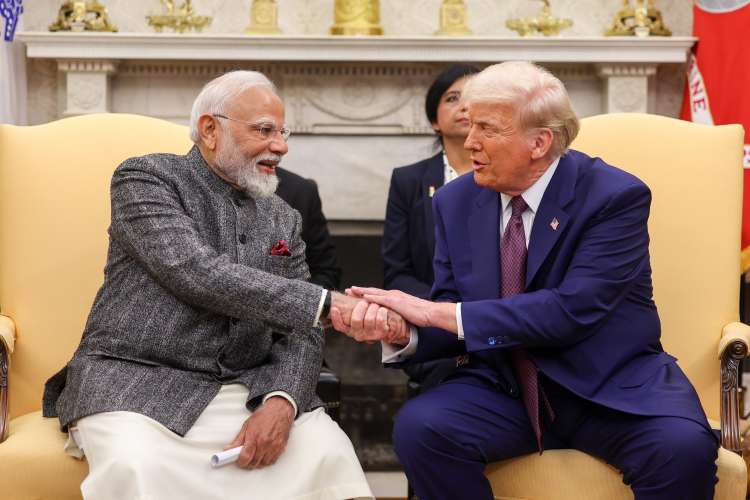Months of anticipation around the India-US trade deal may finally materialise as New Delhi now says that the first tranche of the deal is “near closure.” The development on US-India Bilateral Trade Agreement (BTA) was confirmed by Commerce Secretary Rajesh Agrawal on Monday who said that this phase will squarely address the 50% duties that have impacted a swathe of Indian exports. While the US had imposed a direct 25% reciprocal levy on India, the additional 25% “penalty” was added due to India’s purchase of Russian crude. Trump’s Liberation Day tariff plan had roiled trade ties between the two nations earlier this year.
This is a significant development for Indian exporters, especially in sectors where the US absorbs a large volume of Indian goods. According to senior government sources, the BTA is being negotiated in two distinct packages. The first tranche will deal strictly with tariffs and is advancing quickly. The second will involve long-term cooperation, non-tariff barriers and broader market access. Since this plan is ambitious, it will take more time.
READ | Ukraine war: Why a frozen conflict now looks inevitable
As reciprocal duties are the most pressing friction points, getting them out of the way first is a tactical decision and signals good faith to exporters. It will also pave way for harder structural negotiations ahead.
It is worth noticing that the Commerce Ministry has steadfastly declined to set a hard deadline as neither of the involved parties want to rush the deal and risk jeopardising hard-won gains or enter into compromises that they may later regret. Nonetheless, the continued momentum signals that a deal is increasingly imminent.
What to expect from India-US trade deal?
In fiscal year 2024-25, bilateral trade stood at $131.8 billion. Under the banner of “Mission 500,” India and the US aim to more than double bilateral trade to $500 billion by 2030.
The US side is pushing for better access to its agricultural products viz almonds, pistachios, apples and other goods such as ethanol and genetically modified commodities. These are sensitive domains for India, especially given the political weight of farming and food security. Any concession here will have to thread a needle- liberalise sufficiently to satisfy US demands, but without undercutting domestic farming interests. Meanwhile, items like fruits and nuts, spices, tea, coffee account for more than $1 billion export from India to the US. The Trump administration recently exempted 254 products, including 229 agricultural items, from the tariffs.
A complementary development to the trade deal is a proposal to import LPG (cooking gas) from the US for a year starting in 2026. Officials say this is not strictly part of the BTA tranche under discussion, but rather a separate effort to rebalance the trade ledger. The Trump administration has long begrudged India’s trade surplus with the US which New Delhi looks to placate through energy imports. This may deflate one of the US’s key complaints without conceding core industrial or agricultural ground.
The draft trade package is being designed to be highly detailed and fully aligned with WTO norms. So far, six rounds of talks have been completed. Both sides have announced plans to finalise the first tranche of the deal by fall of 2025. The BTA was formally proposed in February following the meeting of Indian Prime Minister Narendra Modi and US President Donald Trump. However, headwinds from the US administration as it imposed a 25% tariff on Indian exports starting August 1, followed by another 25% increase days later on items like textiles, apparels, carpets as a penalty for India’s continued purchase of Russian oil hampered progress.
Recent remarks from the government and senior-level visits to Washington in mid-October indicate that both governments now see value in closing the first tranche quickly. For India, easing tariff pressures is essential to revive exports at a time when shipments to the US fell nearly 12% in September 2025 due to elevated duties. The October trade date showed that India’s merchandise trade deficit widened to a record $41.68 billion in October, due to an increase in gold and silver imports and a fall in exports to the US under steep new tariffs.
India’s exports to the US fell nearly 9% year-on-year in October to $6.31 billion. October marked the second full month in which 50% tariffs were in force on most Indian goods entering the American market.
For the US, the BTA is part of a broader Indo-Pacific economic strategy where India’s role as a manufacturing counterweight to China has become increasingly important.
The first tranche of the BTA may not be transformational but will remove roadblocks that have prevented the two largest democracies from leveraging their economic complementarities. For the first time in months, it looks that the fraught relationship between the nations is navigable.

